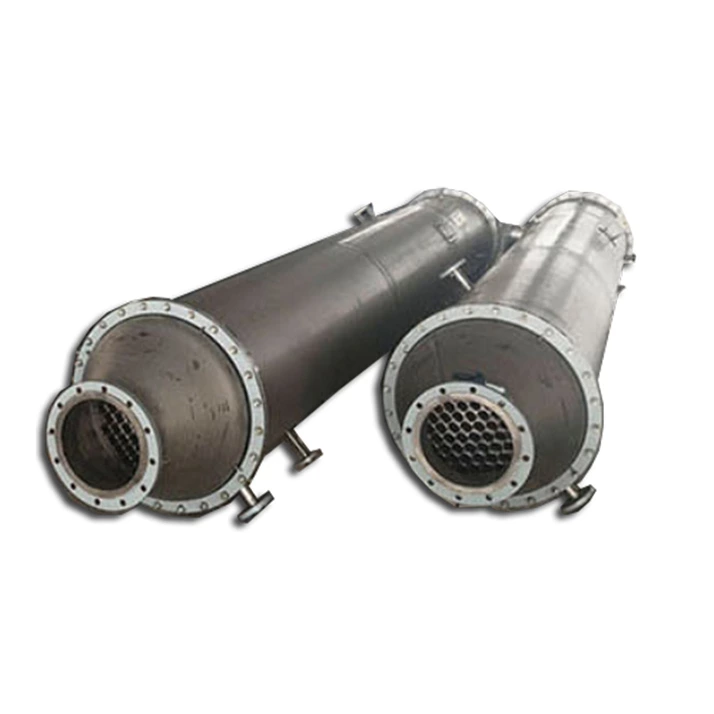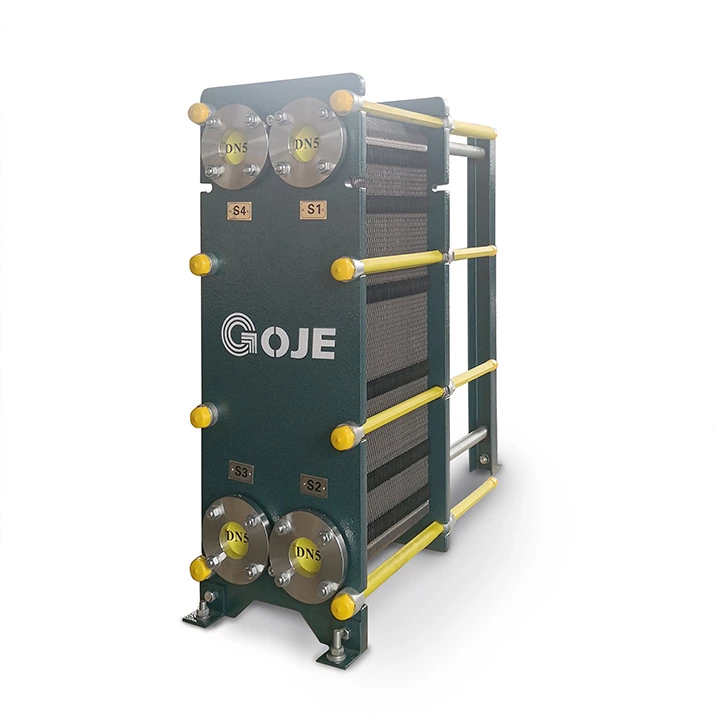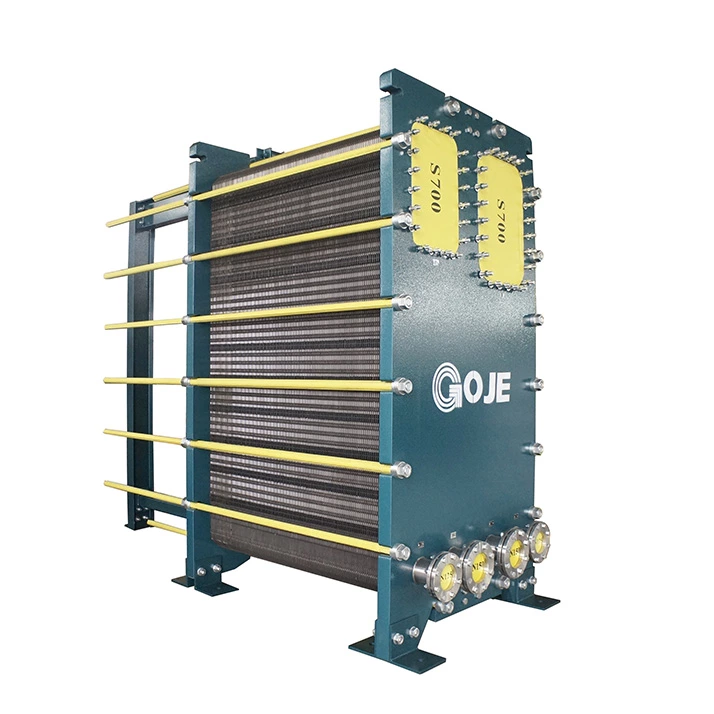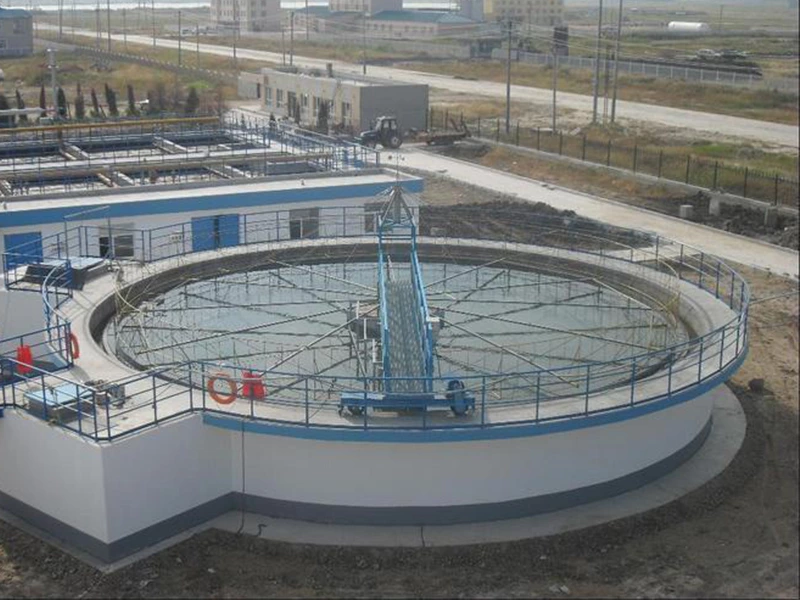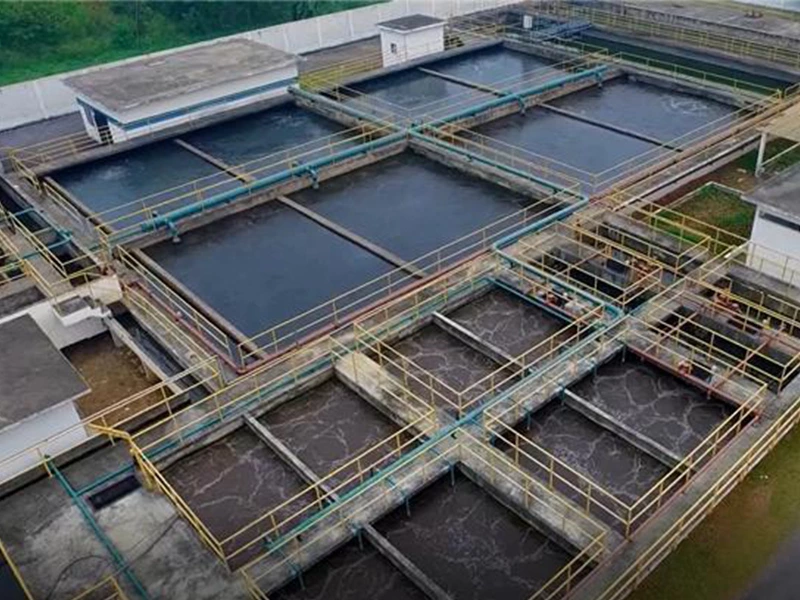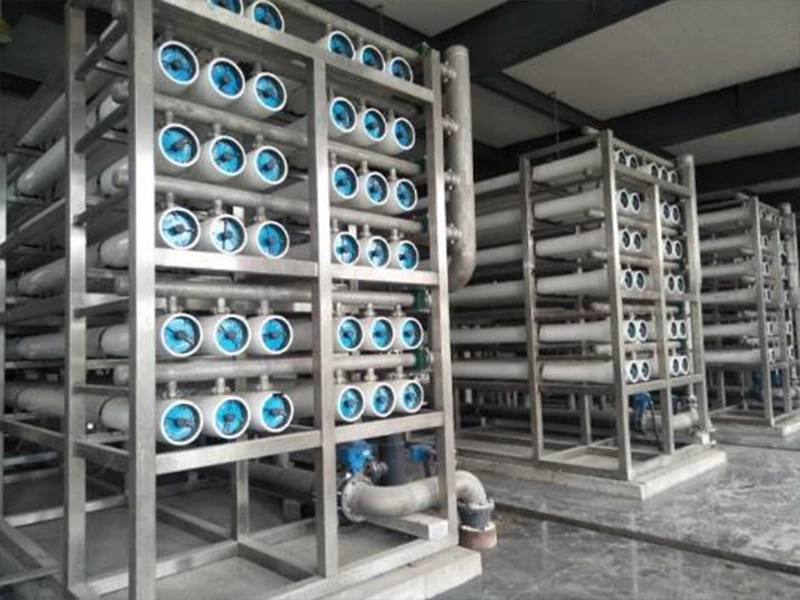Softening treatment equipment for water treatment
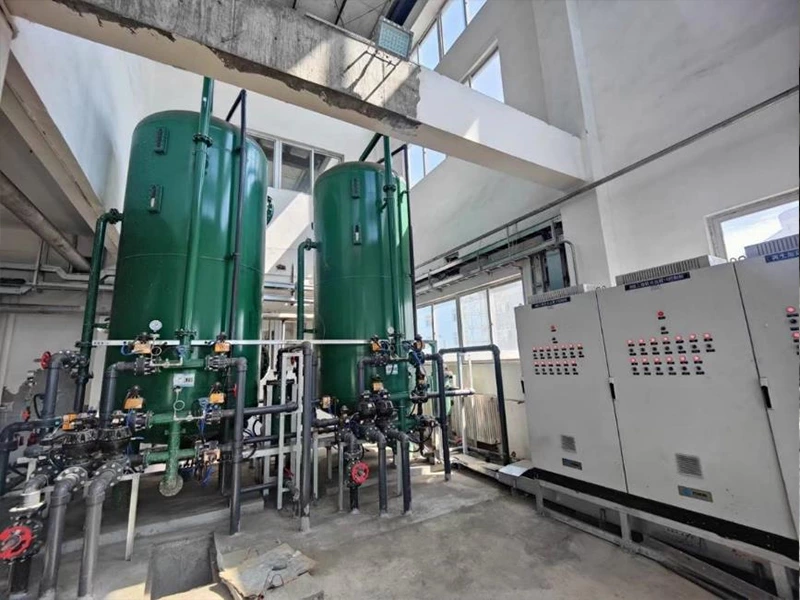
Softening process
Softening treatment is to reduce the hardness of water and reduce the risk of membrane permeation scaling, thus ensuring water recovery and safe and stable operation of the membrane system. Softening can remove most of the Ca2+ , Mg2+ and part of the silicon and fluorine in the wastewater, and remove some of the organic matter in the water through the adsorption, net trapping, precipitation effect of the mud layer in the water. Currently, common softening methods are ion exchange method, pharmaceutical softening method.
1、Ion exchange method
Ion exchange was first discovered and described in detail by the British soil scientists Thompson and Way, they found that ammonium ions were able to exchange with calcium ions in the soil, the mechanism being that silicate in the soil preferred to bind to certain cations. Since then, a series of inorganic ion exchange processes based on aluminosilicates (also known as zeolites) have been developed, but the low exchange capacity has limited the large-scale application of ion exchange processes. After the first successful synthesis of ion exchange resins by Adams in 1935, various types of ion exchange resins have been introduced one after another and are widely used in the fields of water softening, water desalination, hydrometallurgy, molasses decolourisation, and reaction catalysis, etc. The related application technologies have been developed in a relatively mature manner. Ion exchange resin is an insoluble polymer compound consisting of a spatial mesh skeleton and many functional groups attached to the skeleton. The functional group is the location where the ion exchange reaction occurs, and it consists of fixed ions and exchangeable ions (also known as counter ions). Fixed ions are firmly bonded to the ion exchange resin, which carries the opposite electrical properties to the exchangeable ions, while the exchangeable ions carry out ion exchange reactions with ions of the same electrical properties in solution.
1) Gel-type and macroporous resins
According to the pore structure of ion exchange resins, they can be divided into two categories: gel type and macroporous type. Gel-type resin is easy to dissolve, and contains fine pores inside, often called microporous; while macroporous resin will be prepared by adding aromatic hydrocarbons, aliphatic hydrocarbons, alcohols and other organic solvents as a pore-causing agent, which results in more pores inside, larger specific surface area, and faster ion diffusion and exchange speed (about ten times faster than gel-type resin). In addition, the gel-type resin is mainly used for adsorption of inorganic ions, the adsorption capacity of the larger pore-type resin, but it is easy to be contaminated by organic matter, and easy to age after repeated use; and large pore resin in addition to the adsorption of inorganic ions, but also adsorption of organic matter, is not easy to be contaminated, and a long service life, but there are regeneration liquid dosage, the price of a higher level of problems.
2) Strong and weak acid resins
According to the acidity of functional groups, cation exchange resins can be divided into two categories: strong acidic resins and weak acidic resins. The functional groups of strong acidic resins are usually sulfonic acid groups (SO3H), while the common functional groups of weak acidic resins are usually carboxylic acid groups (COOH). In a low concentration solution at room temperature, the selectivity of strong acidic resins in combining with cations is in the order of Al3+>Ca2+>Mg2+ >K+≈NH4+>Na+>H+. The functional groups of strong acidic resins have a strong ionisation ability in aqueous solution, so they are less affected by the pH of aqueous solution, and therefore they are suitable for softening freshwater and slightly salty water, or the amount of regeneration solution used will be very large. The order of selectivity of weakly acidic resin in binding with cations is H+>Al3+>Ca2+>Mg2+ >K+≈NH4+>Na+, and its affinity with H+ is very strong, so it is not suitable for softening solutions with low pH (suitable pH is 5~14). Weak acidic resin can also be divided into H-type and Na-type weak acidic resin, H-type weak acidic resin can only remove carbonate hardness, can not remove non-carbonate hardness such as CaSO4, MgCl2, etc. , this is due to the H-type weak acidic resin and non-carbonate hardness after the exchange reaction, it will produce strong acids such as HCl and H2SO4, etc., and immediately dissociate to make the inverse reaction take place, and the Na-type weak acidic resin has no such problems . In general, strong acidic resins have the advantages of wide application, good reuse performance and low cost, while weak acidic resins have the advantages of large treatment capacity and high regeneration efficiency.
3) Chelating resin
In addition to strong and weak acidic resins, chelating resins can also be used for water softening due to their functional groups that can form chelates with Ca2+ and Mg2+ in solution, which can reduce water hardness. The functional groups of chelating resins for water softening mainly include aminophosphonic acid group [-NHCH2PO3 Na2], iminodiacetic acid group [-N(CH2COONa)2] and aminomethylphosphonic acid group [-CH(NH2)PO3Na2], and the chelating resins are suitable for the softening treatment of high salt solutions.
2、Chemical method
Pharmaceutical softening is the use of chemical precipitation principle, according to the principle of solubility product so that the scale ions in the water to form insoluble compounds and be removed, and its process needs to be completed in conjunction with the coagulation and precipitation process.
Pharmaceutical softening agents commonly used for lime, sodium hydroxide, sodium carbonate, trisodium phosphate, disodium phosphate and so on. According to the raw water quality and process requirements, you can choose one or several agents used at the same time, different dosing methods for different water quality.
1) Lime softening method
This method is suitable for water with low hardness and high alkalinity, and can remove temporary hardness in water.However, the permanent hardness and negative hardness in water cannot be removed by lime treatment
2) Lime-soda ash softening method
Suitable for water with high hardness and low alkalinity. Lime is generally used to remove carbonate hardness from water, while soda ash is used to remove non carbonate hardness.
3) Caustic soda-soda ash softening method (double soda ash method)
Caustic soda-soda ash softening is used for high hardness, organic matter, when the feed water, investment savings, easy to operate, safe and reliable operation, no secondary pollution, is a common softening method for wastewater recycling treatment.
Design a softening method based on the water quality of the project's raw water, the land use of the project, and the later operating costs.Due to the large scale of treatment in the raw water pretreatment stage, chemical softening methods with lower construction investment and operating costs are used. In the concentration reduction and salt separation stages where the treatment scale is small and the softening effect is high, the "chemical agent + ion exchange method" combined process is used to ensure the stable operation of the subsequent membrane system and evaporation crystallization system.
